The IAAC: Innovative 3D Printing with Architecture
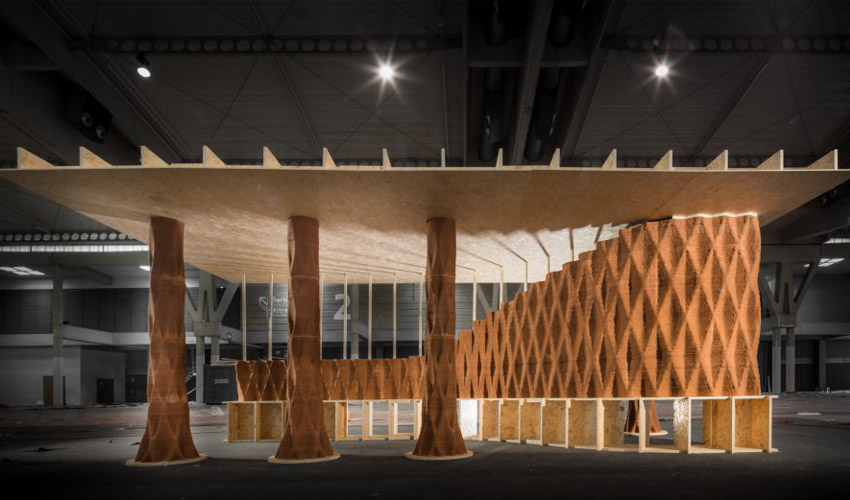
The Institute for Advanced Architecture of Catalonia (IAAC) is a training center in Barcelona dedicated to developing sustainable architectural projects, innovating, and using the best of new technologies, including 3D printed houses.
Their mission is to imagine the future of our society, and start building it now. We spoke to Areti Markopoulou, Academic Director of the Institute, about 3D printing’s importance in architecture.
3DN: How was the IAAC started and how did its relation with the new technologies begin?
The IAAC was founded as a result of the emergence of new digital technologies and information. This is in order to prepare future change makers, professionals capable of creating and creating processes, and spaces more synchronized with the environment, more interactive with its users and more influential in social and economic challenges. All this without forgetting to use new technologies to shape new ideas in the field of design and construction.
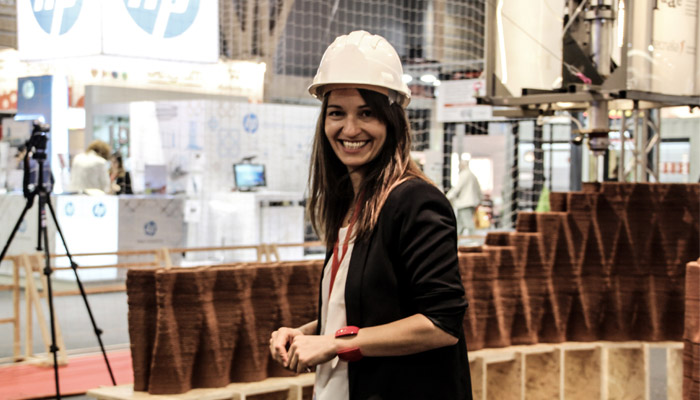
Areti Markopoulou, Academic Director of the Institute
3DN: The Institute is currently developing various research additive manufacturing projects, can you tell us about them?
From the IAAC we worked for more than a decade to bring 3D printing to the field of architecture. Our research projects have gone from experimental prototypes, to infrastructures and functional buildings. An example of this is our project, the first 3D printed pedestrian bridge in the world. We created this a year ago, located in the Alcobendas park in Madrid. Currently, the IAAC is working on 2 main lines of research:
1. Advanced Materials for 3D Printing of Buildings
We are investigating the printing of sustainable buildings or structures with 100% natural materials. This includes raw land (uncooked clay) or bioplastics based on urban organic waste. The raw land in combination with a customized design allows the creation of “passive buildings” that can be heated or cooled with very low energy demand. Bioplastics based on waste have great potential as new material contributing to the reuse, recycling and the circular economy in our cities.
At the same time we work on 3D printing of graphene compounds (which is considered the material of the future), for the creation of architectural elements with integrated intelligence. These compounds can generate and store energy, and distribute the following data in real-time without the need for cables or plugs. This is an important advance so our future buildings can exchange energy and data, synchronizing better with users and the environment.
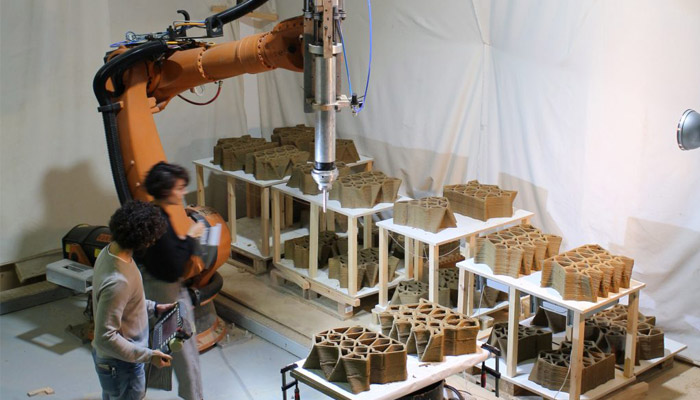
2. 3D Printing Technology in the place of construction (On Site Robotics)
One of our latest challenges is to bring 3D printing on site. That is, bringing the automation to the same place as construction, thus avoiding pre-printing parts off-site. This will allow us to build in places where there is no infrastructure and take advantage of local resources without the need to transport large machinery or materials. To achieve this, we are working on the creation of new 3D printing machines for large-scale construction. This means we are not limited by the size of the printer. For example, we investigate 3D printing with mobile cable robots and drones that can print pieces much larger than their size, and can monitor the state of construction in real time.
3DN: How important do you think the relationship between 3D printing and architecture is today?
3D printing will allow in the future to build faster, cheaper and more sustainably. At the same time, it will introduce new aesthetics, new materials and complex shapes that will be printed by clicking with the mouse of our computers. According to the United Nations, due to population growth we need 100,000 homes per day for the next 15 years. Being able to build affordable housing quickly is not only a great idea, but a necessity.
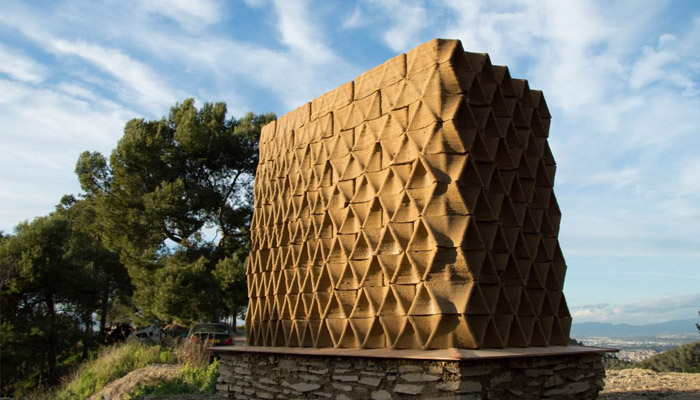
Although 3D printing does not completely replace architectural construction, it will help to optimize several production and assembly processes. This is through introducing new processes and sustainable construction tools. However, there will be many technical innovations that affect 21st century architecture. 3D printing is just one of them: the Internet of Things, intelligent and biological materials, augmented reality and more will also change construction models.
3DN: What future plans does the IAAC have in Spain and in Europe?
We are focused on continuing to transform our research into real applications. Our next challenge is to 3D print a whole house. For this, we have collaborated with research centres and large construction companies in Spain and Europe, China and the USA.
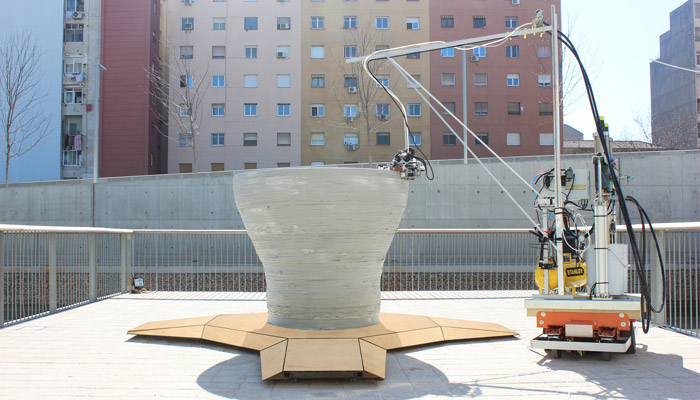
IAAC’s ‘Grip’ robot.
3DN: What audience does the IAAC focus on?
To anyone who wants to have a great impact on social, economic and environmental challenges. We are a multidisciplinary education and research centre, working on projects ranging from the development of small sensors and robots to entire buildings and urban plans. We are looking for people who enjoy learning by experimenting and doing, people who leave their comfort zone. In the IAAC we teach them new ways of thinking and we ourselves are learning constantly.
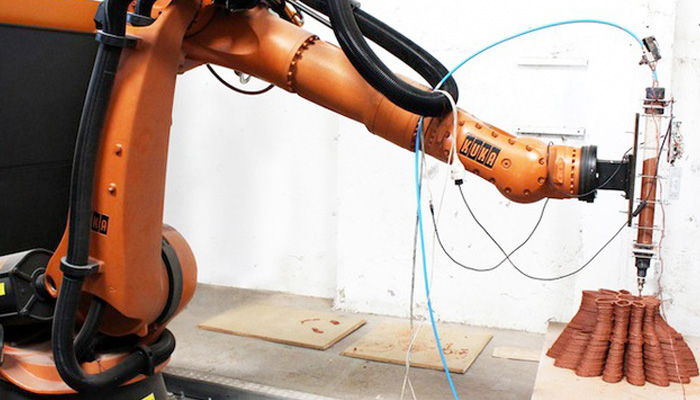
3DN: Do you have any last words for our readers?
Technologies can only be the answer if we know how to ask the right questions!
What do you think about the IAAC? Let us know in a comment below or on our Facebook and Twitter pages! Don’t forget to sign up for our free weekly Newsletter, with all the latest news in 3D printing delivered straight to your inbox!






